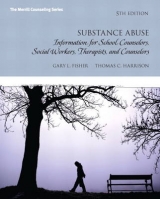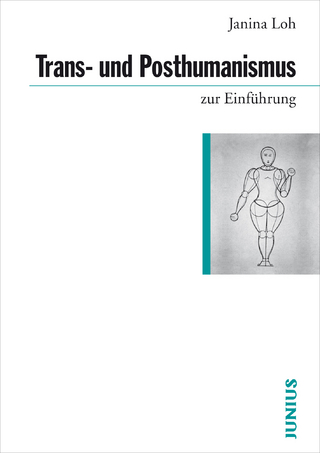
Substance Abuse
Pearson (Verlag)
978-0-205-59176-3 (ISBN)
- Titel erscheint in neuer Auflage
- Artikel merken
Contents
Preface xiii
Chapter 1
The Role of the Mental Health Professional in Prevention and Treatment 1
The Need for Generalist Training 3
Philosophical Orientation 5
Attitudes and Beliefs 6
Denial, Minimization, Projection, and Rationalization 7
Helping Attitudes and Behaviors 8
Overview of the Book 10
Chapter 2
Classification of Drugs 12
Comprehensive Drug Abuse Prevention and Control Act 12
The Concept of Dangerousness 13
Definitions 14
Central Nervous System Depressants 15
Central Nervous System Stimulants 18
Opioids 21
Hallucinogens 23
Cannabinols 25
Inhalants and Volatile Hydrocarbons 27
Anabolic Steroids 28
Club Drugs 30
Drugs Used in the Treatment of Mental Disorders 31
Summary 33
Additional Reading 33
Internet Resources 33
Drug Use Survey 33
Further Discussion 34
Chapter 3
Models of Addiction 35
The Moral Model 36
Sociocultural and Psychological Models of Addiction 37
Disease Concept of Addiction 39
Biopsychosocial Model of Addiction 46
Summary 49
Internet Resources 49
Further Discussion 50
MyHelpingLab Assignment
50
Chapter 4
Culturally and Ethnically Diverse Groups 51
Native Americans and Alaska Natives 52
Asian Americans and Pacific Islanders 58
African Americans 63
Latino and Hispanic Populations 69
Persons with Disabilities and the Elderly 74
Helping Culturally and Ethnically Diverse Populations 75
Summary 79
Internet Resources 81
Further Discussion 81
Chapter 5
Confidentiality and Ethical Issues 82
Confidentiality: 42 Code of Federal Regulations, Part 2 (42 CFR) 83
Health Insurance Portability and Accountability Act (HIPAA) 89
Documentation 90
Ethics 91
Application of Confidentiality Regulations 93
Summary 95
Internet Resources 95
Further Discussion 96
MyHelpingLab Assignment 96
Chapter 6
Assessment and Diagnosis 97
Definitions of Use, Misuse, Abuse, and Dependence or Addiction 98
Psychosocial History 100
Signs of Adolescent Substance Abuse 106
Self-Report Inventories 107
Referral 112
Diagnosis 114
Summary 118
Internet Resources 118
Further Discussion 119
MyHelpingLab Assignments 119
Chapter 7
Client Engagement and Brief Interventions 120
Client Engagement 122
Motivational Interviewing 122
Brief Interventions 129
Summary 131
Internet Resources 131
Further Discussion 131
MyHelpingLab Assignments 132
Chapter 8
Treatment of AOD Problems 133
How Many Are in Treatment? How Many Need Treatment? 133
What Happens in Treatment? 134
Treatment Strategies and Techniques 138
Treatment Settings 144
Principles of Effective Treatment 147
Evidence-Based Treatment 149
Treatment and Special Populations 149
Treatment Effectiveness 155
Client—Treatment Matching 157
Special Problems in Treatment 158
Summary 162
Internet Resources 163
Further Discussion 163
MyHelpingLab Assignment 163
Chapter 9
Relapse Prevention and Recovery 164
Need for Generalist Training in Relapse Prevention 165
Definitions of Slipand Relapse 165
Frequency of Slips and Relapse 166
Is Relapse in Addiction Similar to Other Chronic Conditions? 167
Models of Relapse Prevention 167
Essential Components of Relapse Prevention 171
Preventing Slips from Escalating 178
Recovery 179
Summary 180
Internet Resources 181
Further Discussion 181
MyHelpingLab Assignment 181
Chapter 10
Twelve-Step and Other Types of Support Groups 182
Alcoholics Anonymous 183
Other Twelve-Step Groups 190
Advantages and Disadvantages of Twelve-Step Groups 191
Other Types of Support Groups 193
Summary 197
Internet Resources 197
Further Discussion 198
MyHelpingLab Assignments 198
Chapter 11
Children and Families 199
Children’s Exposure to Alcohol and Other Drugs 200
Family Exposure to Alcohol and Other Drugs 204
Intergenerational Transmission of Alcoholism 215
Women and Alcoholism 216
Stepfamilies: System and Structure 220
Helping Families 221
Summary 226
Internet Resources 227
Further Discussion 227
Chapter 12
Adult Children and Codependency 228
Adult Children of Alcoholics (ACOAs) 229
Assessment and Treatment Considerations 231
ACOAs and Diversity 233
Codependency 234
Implications for Mental Health Professionals 240
Relationship of ACOA, AA, Al-Anon, and Codependency 243
Codependency and Diversity 245
Summary 252
Internet Resources 253
Further Discussion 254
Chapter 13
HIV/AIDS 255
Incidence and Prevalence 255
Myths and Facts about HIV and AIDS 256
Risk Factors and High-Risk Populations 260
Assessment of Clients for HIV and AIDS: Signs and Symptoms 265
Helping HIV-Infected Clients 265
HIV-Related Issues Specific to the Helping Professional 272
Summary 273
Internet Resources 274
Further Discussion 275
Chapter 14
Gambling and Other Addictions 276
Prevalence of Gambling and Gambling Problems 277
Definitions of Gamblers and Problem Gambling 2
80
Assessment and Diagnosis 281
Treatment, Resources, and Support 284
Other Addictions 286
Food Addiction: The Eating Disorders 289
Addiction to Sex and Love 296
Internet Addiction 297
Addiction to Work: Workaholism 300
Assessment and Treatment Issues 303
Summary 308
Internet Resources 310
Further Discussion 310
Chapter 15
Prevention 311
Why Are Prevention Efforts Needed? 311
Policy Issues in Prevention 312
Prevention Classification Systems 317
What Works in Prevention 320
Evidence-Based Prevention 328
Prevention Resources 328
Summary 329
Internet Resources 329
Further Discussion 329
References 330
Index 330
Preface
| Erscheint lt. Verlag | 3.4.2008 |
|---|---|
| Sprache | englisch |
| Maße | 233 x 178 mm |
| Gewicht | 572 g |
| Themenwelt | Sozialwissenschaften ► Soziologie |
| ISBN-10 | 0-205-59176-0 / 0205591760 |
| ISBN-13 | 978-0-205-59176-3 / 9780205591763 |
| Zustand | Neuware |
| Haben Sie eine Frage zum Produkt? |
aus dem Bereich



